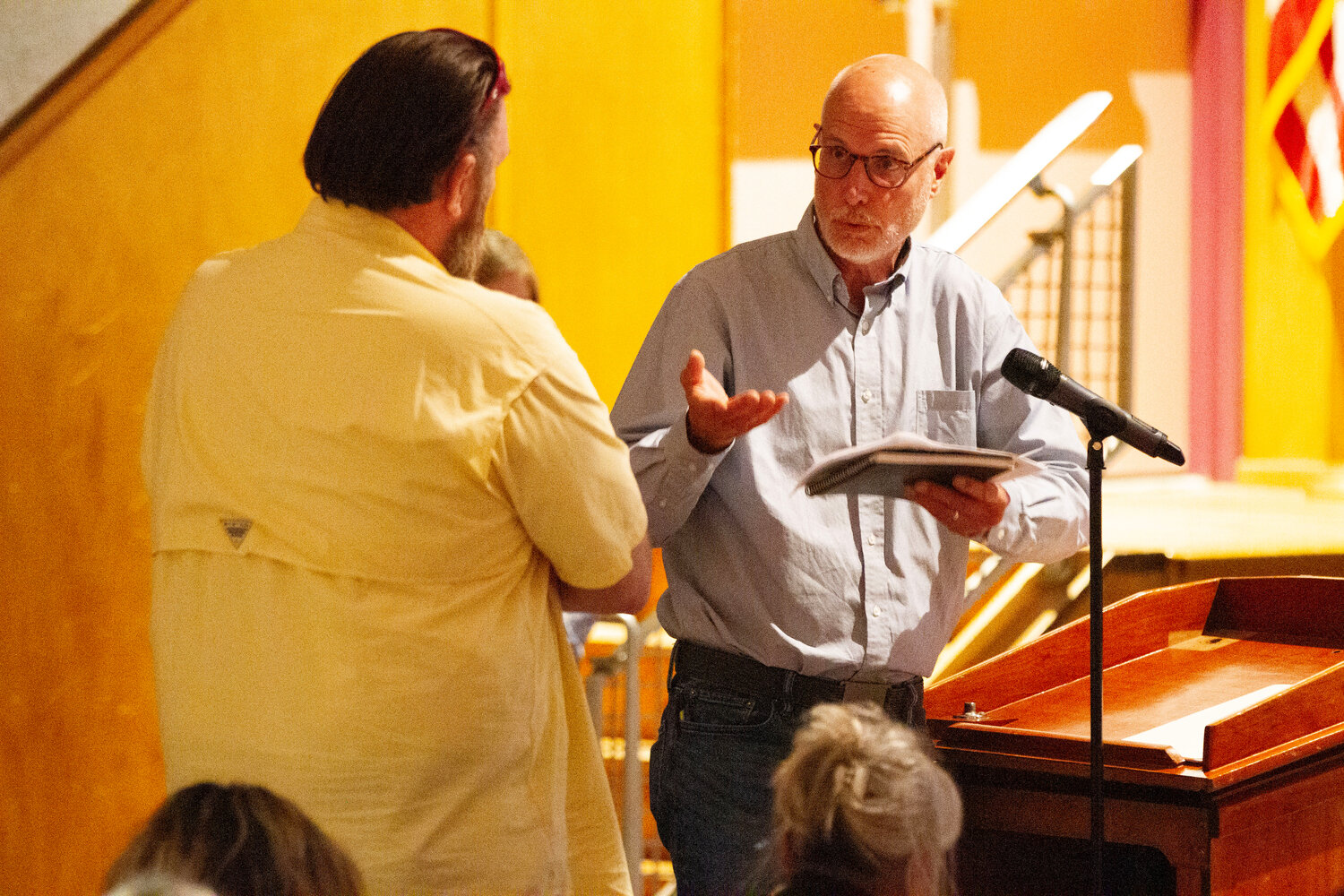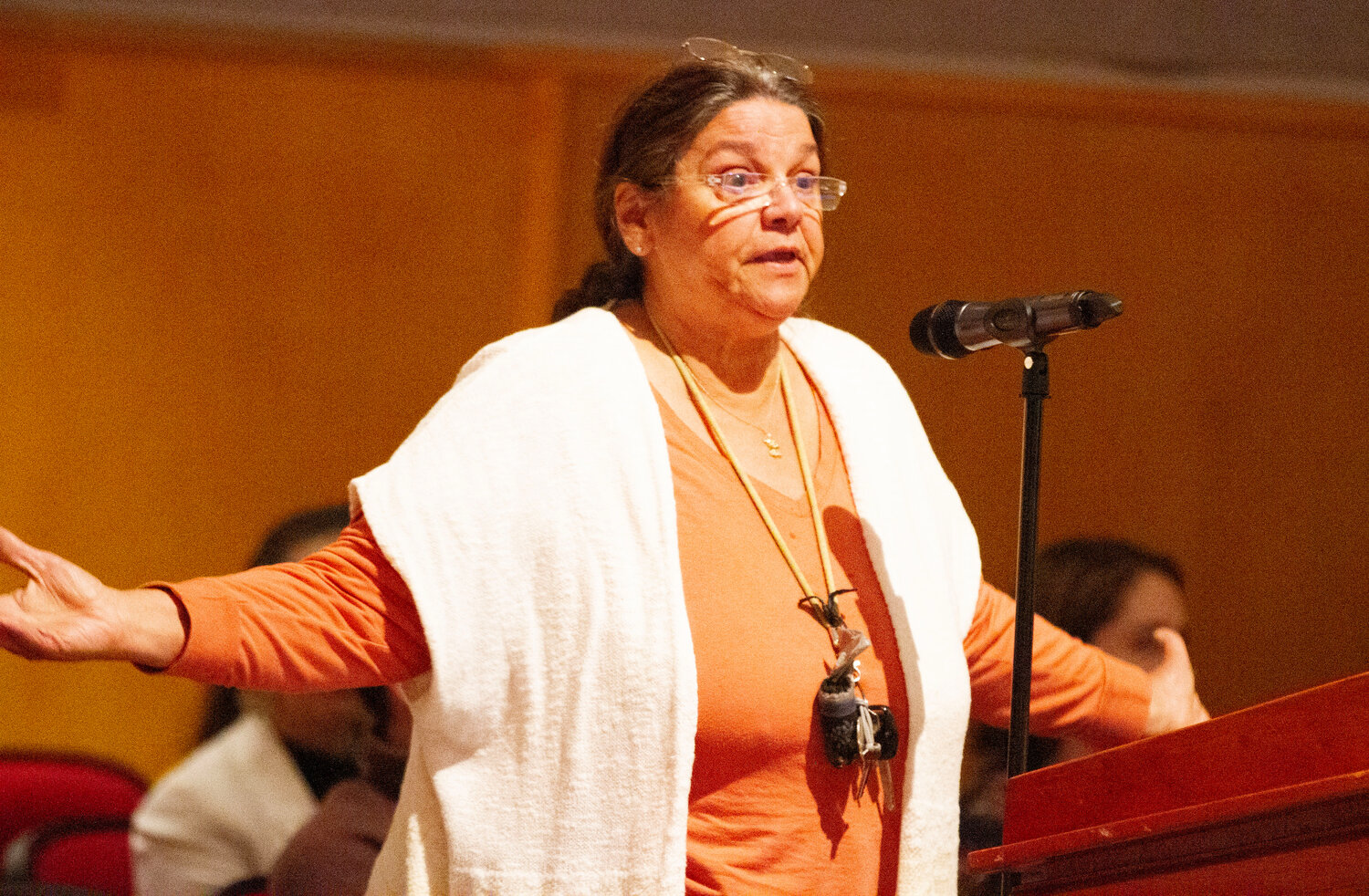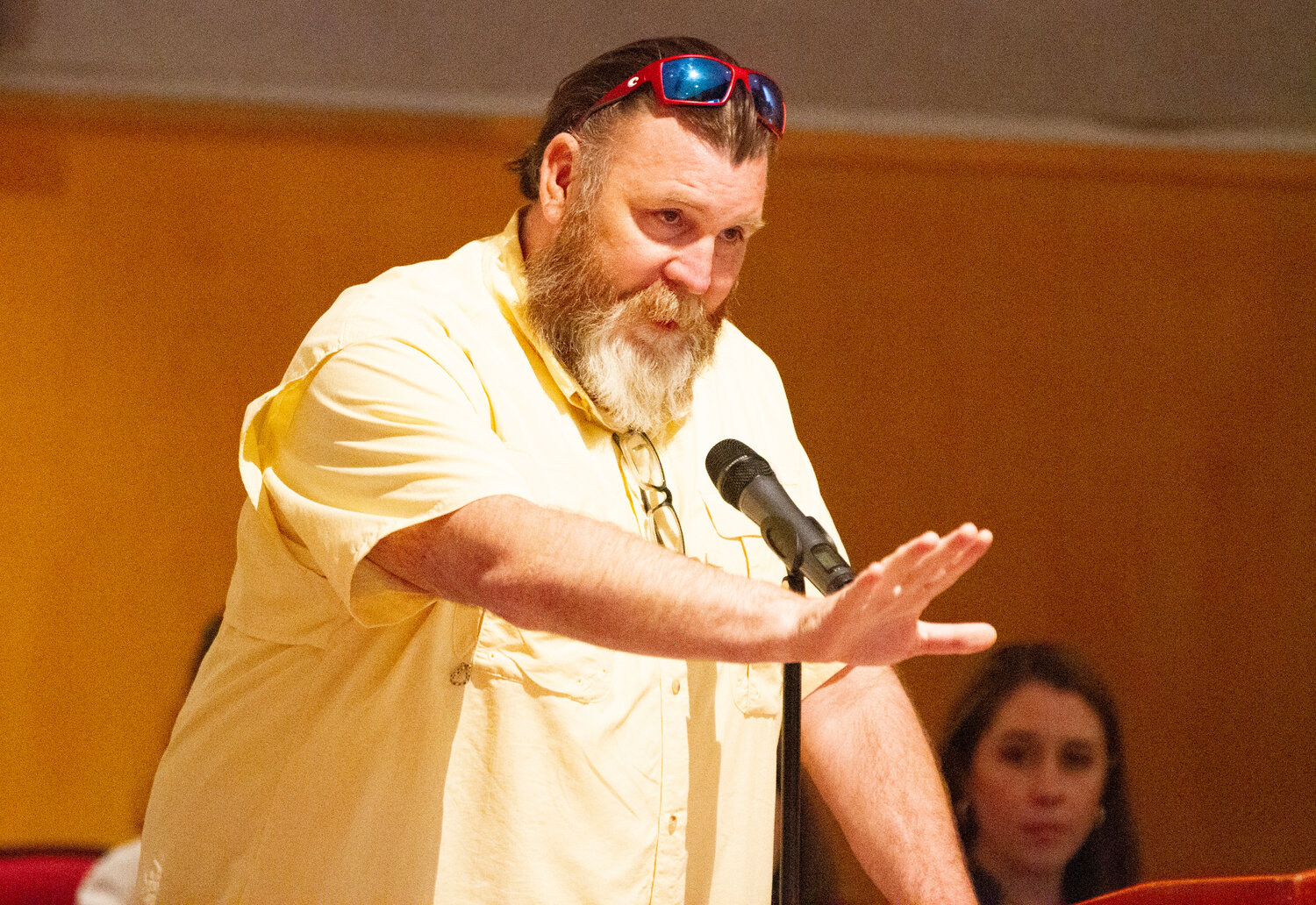Portsmouth again denies any deal with SouthCoast Wind
Over 100 show up at workshop at high school
The Town Council, yet again, told a crowd of more than 100 people who turned out Thursday night for a workshop about SouthCoast Wind that there was no current proposal or contract for the town to …
This item is available in full to subscribers.
Please log in to continue |
Register to post eventsIf you'd like to post an event to our calendar, you can create a free account by clicking here. Note that free accounts do not have access to our subscriber-only content. |
Day pass subscribers
Are you a day pass subscriber who needs to log in? Click here to continue.
Portsmouth again denies any deal with SouthCoast Wind
Over 100 show up at workshop at high school
The Town Council, yet again, told a crowd of more than 100 people who turned out Thursday night for a workshop about SouthCoast Wind that there was no current proposal or contract for the town to consider with the offshore wind developers.
“Nothing has happened. There is no host community agreement,” Council member Keith Hamilton told audience members inside the Portsmouth High School auditorium. If the council was to consider such an agreement in the future, the panel would discuss and vote on the matter in public after hearing from residents, he said.
Thursday’s workshop featured a short overview of SouthCoast’s plans, which was led mainly by Lawrence Mott, transmissions development manager for the company; and Kelsey Perry, the developer’s community liaison coordinator.
SouthCoast Wind, formerly Mayflower Wind, has an application before the R.I. Energy Facility Siting Board (EFSB) to connect offshore wind turbines located 30 miles south of Nantucket to the regional transmission system at Brayton Point in Somerset. To do that, the developer would need to run transmission cables up the Sakonnet River, beneath Island Park Beach, up Boyds Lane and Anthony Road, under the Montaup Country Club before reentering waters in Mt. Hope Bay and making final landfall in Somerset.
Besides making speeches and peppering SouthCoast reps with questions, several members of the audience also confronted members of the Town Council, accusing them of secretly working behind the scenes to form an agreement with the developer — a charge town officials vehemently denied.
The council has discussed SouthCoast in executive session, Hamilton and Council President Aguiar both acknowledged, but that is normal for any negotiations.
“Anything that’s done before any final decisions are made, that stuff is made public,” said Hamilton, adding that one recent executive session on the topic (April 10) was merely to update council members on the application’s process. No SouthCoast reps were even there, he said.
Jeanne Smith, of Morgan Street, asked the SouthCoast reps point blank whether the town has already signed a host community agreement with the developer.
“We have signed nothing,” said Mott. SouthCoast had an initial meeting with the council in August 2022, and that’s when the host community agreement was first brought up. “But there’s been no agreements.”
The council is one of many groups being asked to submit an advisory opinion to the EFSB, which is made up of the chairman of the Public Utilities Commission, the director of the Department of Environmental Management, and the associate director of Administration for Planning. The EFSB will ultimately decide whether the project goes forward, Hamilton said.
Although Thursday’s workshop was intended as a Q&A session with SouthCoast representatives and the council, it didn’t always go that way.
Speaker after speaker took to the microphone during the three-and-a-half-hour meeting, most of them opponents of offshore wind who repeated the same claims made during a rally held May 12 at Island Park Beach: Running transmission cables up the Sakonnet River will do irreparable harm to marine life, and in extension recreational and commercial fishing; offshore wind is not a viable solution to climate change; there are more suitable routes for the cables than up the river and over Portsmouth; the project will benefit Massachusetts and not Rhode Island; SouthCoast is “hiding” key documents from the public; and other accusations.
Their claims have been sharply disputed by many scientists and proponents of renewable energy, who say that opponents have greatly exaggerated the negative impacts of offshore wind and have made logical fallacies during their arguments.
Corey Wheeler Forrest of Boyds Lane, a third-generation trap fisherman and fish dealer, spoke for many when she said the project will negatively impact fisheries and local food sources. She called SouthCoast’s proposal and “unchartered, unprecedented” project that’s happening too fast with many questions will unanswered.
“Portsmouth is not the best route; there are better routes that have less impact on the environment,” said Joe Forgione, of Aquidneck Avenue, adding that two routes that have already been dismissed — through Little Compton and Middletown — would see less of an impact than Portsmouth.
He called the Sakonnet River a “pristine habitat” and that the digging required to lay transmission cables will create sediment disturbances that will harm the environment.
A few in favor
Of the approximately 30 people who spoke, only three commented in favor of the project, and one of them urged the council and the wider public not to be fooled by what she called a well-organized disinformation campaign operated by offshore wind foes.
Tina Munter, of Narragansett, received a smattering of applause when she said something needs to be done now about climate change, and wind energy is one of the best solutions. SouthCoast’s project, she said, will help “us burn less fossil fuels and emit less Co2 into our environment.”
Munter said she understood why so many people were against the cables going in, and they were right to ask SouthCoast for more scientific documentation. “But I ask you to at least try to see the other side,” she said.
She pointed to a Brown University paper, “Discourses of Climate Delay in the Campaign Against Offshore Wind: A Case Study from Rhode Island,” which was published in April. The study is heavily critical of a Little Compton-based group, Green Oceans, some members of which spoke at the May 12 rally as well as Thursday’s workshop.
The Brown University report concluded the citizens group uses techniques of disinformation — “fake experts,” conspiracy theories, logical fallacies, cherry-picking, and more — similar to other organizations nationwide that either deny climate change and/or are backed by the fossil fuel industry.
“Look for cherry-picking, conspiracy theories …” Munter started, before some in the crowd began shouting her down. After Aguiar quieted the crowd, Munter said offshore wind does produce carbon emissions, but at a rate significantly less than fossil fuels. It’s true that marine animals will be impacted, she said, but so is oil-drilling going on deep into the oceans.
“I don’t believe we’re making decisions for ourselves right now, you’re making them for your children and your grandchildren, and for the animals,” Munter said.
Kyle Fenton, of Canonchet Drive, also supported SouthCoast, saying he’s seen “a lot of misinformation” about the project over the past few months. As for claims the transmission cables will harm the local ecology, he said there are already three similar underwater cables in the area. Perhaps their impact on marine life over the past few decades should be studied, he said.
While Fenton acknowledged the project will impact the area, it will also benefit future generations, he said. “I support this wind project and I do it because I feel for the future. Will they be able to afford electricity?” he asked.
Amanda Barker, the Rhode Island policy advocate for the Green Energy Consumers Alliance, appeared remotely in support of SouthCoast, saying the proposal will help reduce climate change, transition more people away from fossil fuels, and create jobs.
“SouthCoast will power more then a million homes throughout the region,” said Barker.
While there will be “temporary impacts” to the fisheries during construction, they will be minor in nature, she said. “We advocate for offshore wind because we have to,” Barker said. “We don’t need to choose between offshore wind and wildlife protection; we can do both.”
SouthCoast answers
SouthCoast reps also countered several claims made by wind energy opponents, some of whom said the turbines will be easy to see from the local shoreline. Not so, said Perry.
“The only place the turbines are slightly visible is the island of Nantucket,” she said. “You will not be able to see the turbines anywhere from Rhode Island.”
She added the turbines will incorporate a standard lighting system for aircraft safety, but they will be illuminated only when a plane flies over at a certain range. SouthCoast has visual simulations posted on the Bureau of Ocean Energy Management (BOEM) website, she said.
SouthCoast reps denied charges it’s hiding documents from the public or working with town officials behind the scenes. Some documents, Smith explained, are proprietary in nature and can’t be released at this time. Perry added the documents “are controlled through the regulatory review process” and will be publicly released when the state deems it’s time to do so.
“Any information that we have shared with town staff has been the same public information that we’ve shared with you,” Mott said.
Jeanne Smith questioned SouthCoast’s partnerships with other organizations — Roger Williams University, Clean Ocean Access, U.S. Sailing, and the Greater Newport Chamber of Commerce, among others. “Do you pay them?” Smith asked.
Those groups have indeed received funds from SouthCoast, said Perry. “We want to be part of this community. We are aligned with many of their initiatives,” she said.
Answering a question by Sal Carceller of Lepes Road, Hamilton said SouthCoast, when it was still known as Mayflower Wind, gave money to the town so staff could research the proposal.
“No taxpayer money has been used to fund any research on this project,” Hamilton said slowly, for emphasis.
































